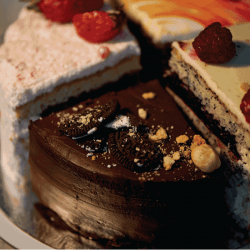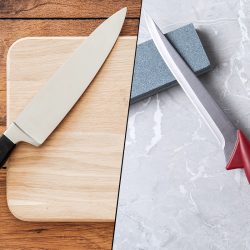There are few things as delicious in life as freshly baked bread, right out of the oven. But when it comes time to eat your delicious food, a problem tends to arise. Cutting bread can be quite tricky, especially without a proper bread knife. But what are some ways to successfully cut a slice of fresh bread without said bread knife? Well, we here at kitchenseer.com have brought you all the info you need to know.
There are a few alternative methods to the bread knife you can use. Making pre-cuts on your homemade bread using a dough cutter will allow for easy slices. A cake cutter can also be used as an alternative tool in a pinch. Another trick for cutting bread with a standard knife is to turn the bread upside down and cut it lightly. For all of these methods, wait until the bread cools down. It will be much easier to cut.
There's a lot more to go in with these methods, so continue reading to learn about what we're suggesting and more helpful tips on how to cut bread without a bread knife.
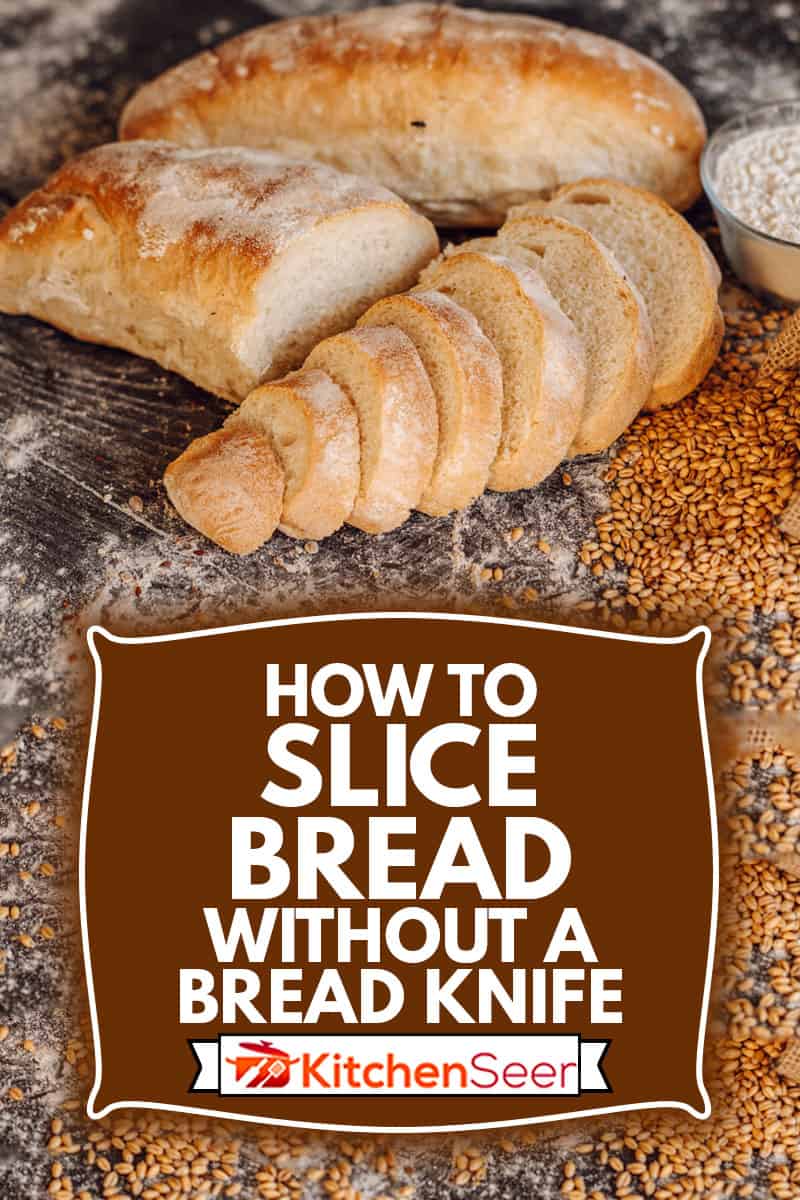
What can I use if I don't have a bread knife?
Purchasing a serrated bread knife is doubtlessly the best way to cut bread. There are other methods, however, to cut bread without one, as we've mentioned above. Let's look into them in more detail so you can be on your way to a delicious meal.
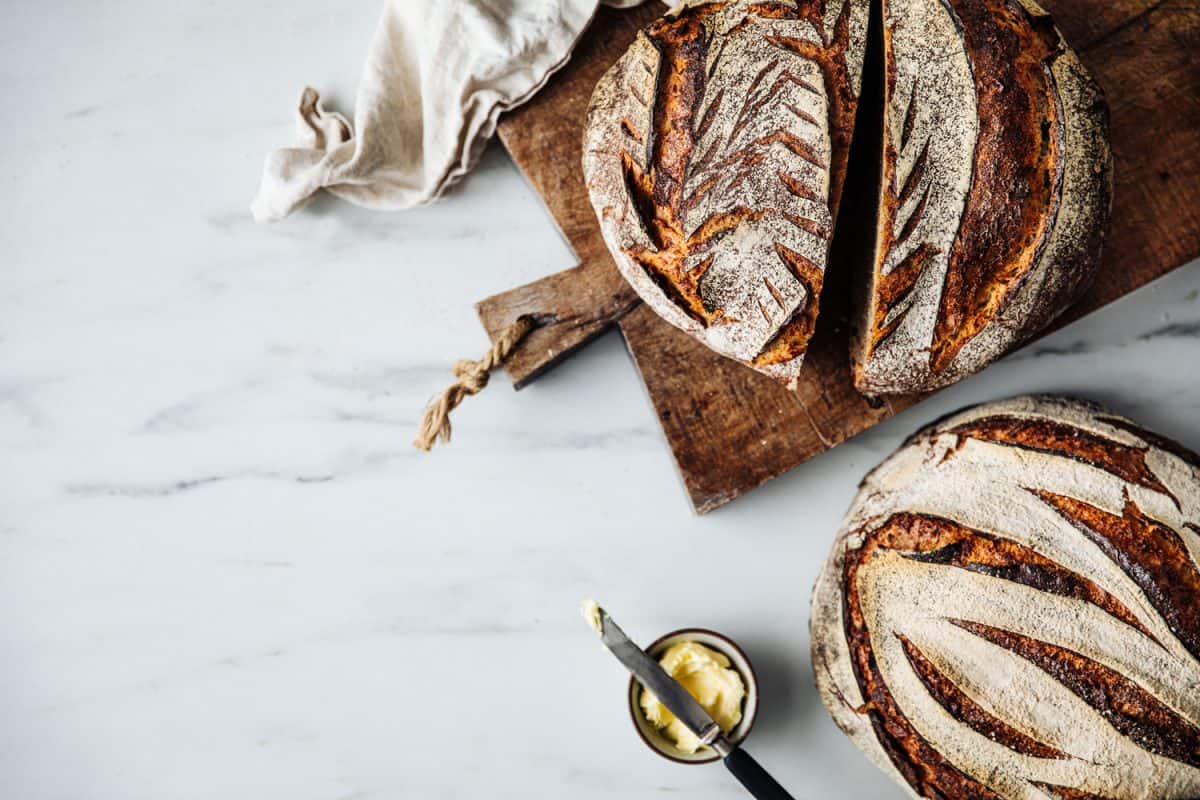
The dough cutter method
This method works particularly well with bread you've cooked at home. Before putting your dough in the oven to cook, plan out the slices you want. Then make pre-cuts into the dough before baking the bread. This will make the bread easy to tear apart in the pre-planned slices you scored before baking.
With this method, there won't be any need to cut after baking. You can get away with only using your hands with this method; it's so simple.
The cake cutter method
A cake cutter is another method you can use to cut your bread. Get a cutting board and make sure it is clean before placing your bread on it. Let your bread cool down, as this makes it easier to cut. Place your bread above the cutting board, decide on the thickness of the slice you want, and start cutting. To avoid smashing your bread, use your cake cutter with light pressure. Let gravity do most of the work, and your bread should come out looking great.
The standard knife method
This might raise a few eyebrows, but there is a trick that makes a standard knife feasible in a pinch. The key is to flip your bread upside down and cut it from the bottom up. Make sure you're using a cutting board and that it's clean before starting to cut.
Let your bread cool some to make for easier cuts, and then flip it upside down. Decide on the thickness of your slices, and then start cutting using light pressure. The trick is, again, to let gravity do as much of the work as possible. Keep your motions smooth and light and your cuts should make it out just fine.
The hand method
There is, of course, the ultimate tool-free method of 'slicing' bread. Your hands. This is obviously not recommended for more delicate bread and pastries and should probably be used only when eating bread by yourself or close family. However, it is worth noting that some bread, particularly certain kinds of baguettes, do look rather appealing with a more rustic torn appearance to them instead of a clean cut. It's something to consider with certain types of bread.
Read now on KitchenSeer: The six best ways to store bread.
How long should bread cool before cutting?
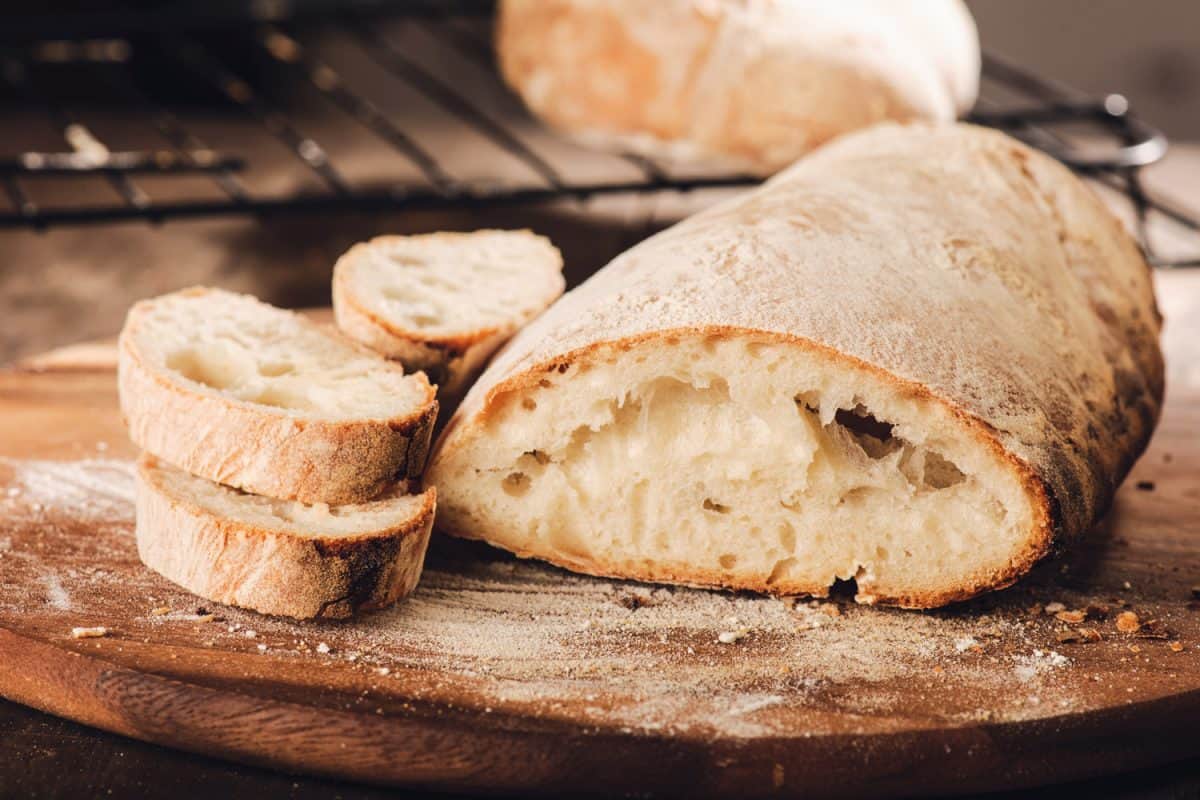
You may have noticed several times we've repeated the necessity of letting your bread cool to room temperature or just above room temperature before beginning to cut it. This makes the cutting process far easier, makes your break far less likely to sustain damage, and allows it to be fully set after coming out of the oven. All of these are important for the taste and integrity of the bread to be maintained.
The time it takes for bread to cool largely depends on the type and size of the bread being baked. Rolls, for example, take only about twenty minutes to cool properly and reach an acceptable temperature level. However, a large loaf of bread in a pan will likely take about an hour, while a freeform loaf of bread will take upwards of ninety minutes.
The urge to tear into fresh hot bread is difficult, but experts agree that bread tastes better when allowed to set. If you like your bread warm, you can pop your sliced bread back into a pre-heated oven for ten minutes and get it warm before serving.
Does bread cool in the pan or out?
If baking bread in a pan, the question of whether to let it sit in the pan or out might come to mind. The best answer to this is generally a combination of both. Ideally, letting bread sit in the pan for a few minutes allows the steam to condense around the bread. This makes the bread firm up and easier to slide out of the pan and onto a cooling rack to finish cooling. Don't let it sit in the pan too long, or else it might become sticky and hard to remove.
If the bread becomes sticky, use a small flexible metal spatula to gently work around the bread edges. Your bread should be able to slide right out after
What happens when you cut hot bread?
Cutting into the bread while it's still warm not only risks the chance of it being sticky and hard to cut, but your bread will also likely taste worse. Because the molecules of the bread are still dense and water-logged, your bread will come away with an unappetizing texture and lackluster taste. Resist the urge to dig in before fully cooling, and let the bread reheat if necessary to obtain a delicious and fully realized bread.
Knife information
So the next important thing you're probably wondering is, while all this information is great, cutting bread with a proper knife still seems like the best plan. And you'd, of course, be right in that assumption. So what are some of the more common questions regarding knives when it comes to your bread?
Can you cut bread with a chef's knife?
Many people have one question: will a chef's knife do the job when it comes to successfully cutting bread? These knives are generally high quality and cost a good amount of money, so the urge to use them for everything is understandable. You can use a chef's knife to cut harder bread, but it will run into similar issues that other non-serrated blades face with softer bread.
Also, while it won't exactly be the most taxing of jobs on your knife, any increase of use on your chef's knife will add to the dulling process simply due to increased workload and the likelihood of hitting the cutting board more often. These are things to keep in mind.
Read now on KitchenSeer: Is a bread knife good for cutting brisket?
How do I choose a bread knife?
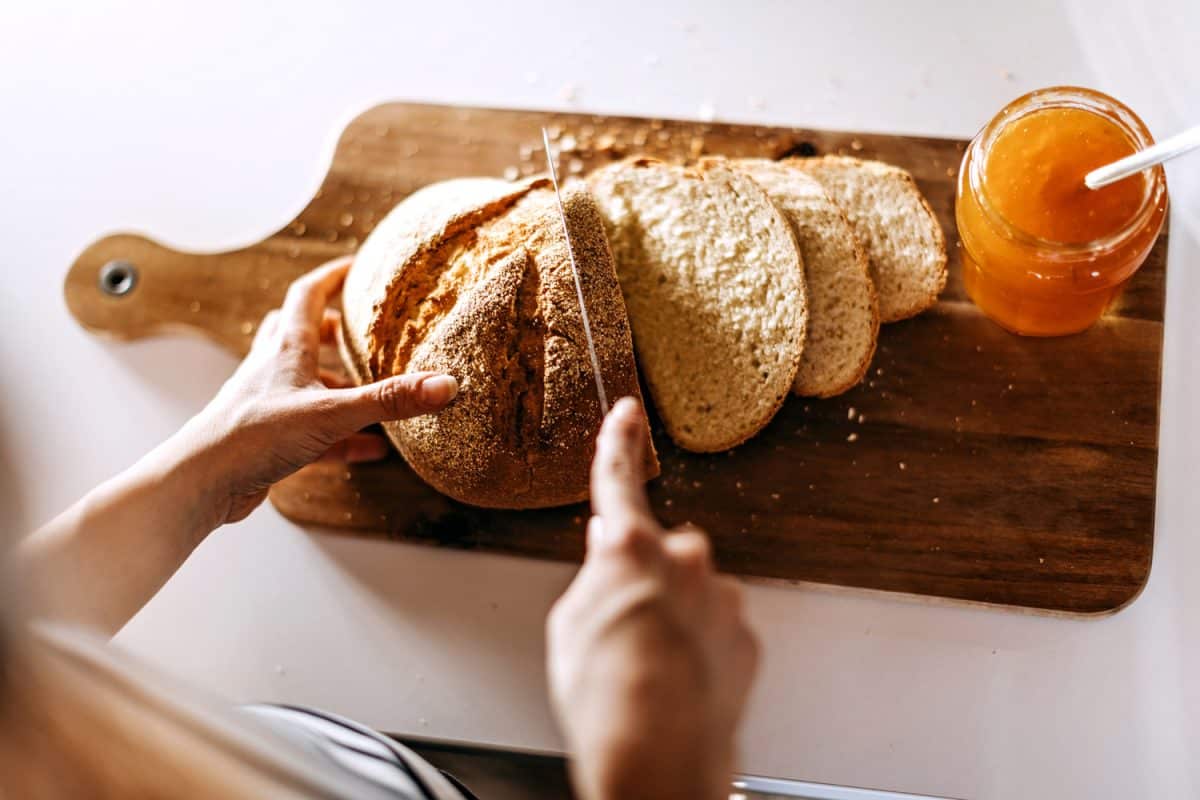
So, after all this, you've decided it really does make the most sense to add a quality bread knife to your kitchen. What should you be looking for in a quality bread knife made specifically to cut bread? Bread knives do differ from other knives, such as chef's knives, in several key ways.
They aren't made to do a ton outside of their specified function (except perhaps cutting tomatoes, for instance), and secondly, they are quite hard to sharpen. This makes their shelf life more limited. Bread knives shouldn't be super pricy and will likely need to be replaced every five years or so.
The first thing to look for is length. Some loaves of bread can be quite long across, and you'll want a blade big enough to handle it. We recommend a blade nine to ten inches long. Secondly is the distribution of the serrations on the serrated edge. It's been tested, and fewer wider-spaced serrations seem to perform better overall. The comfort of the grip is also an important factor in the quality of your blade. If possible, test blades out in your hand beforehand.
In Closing
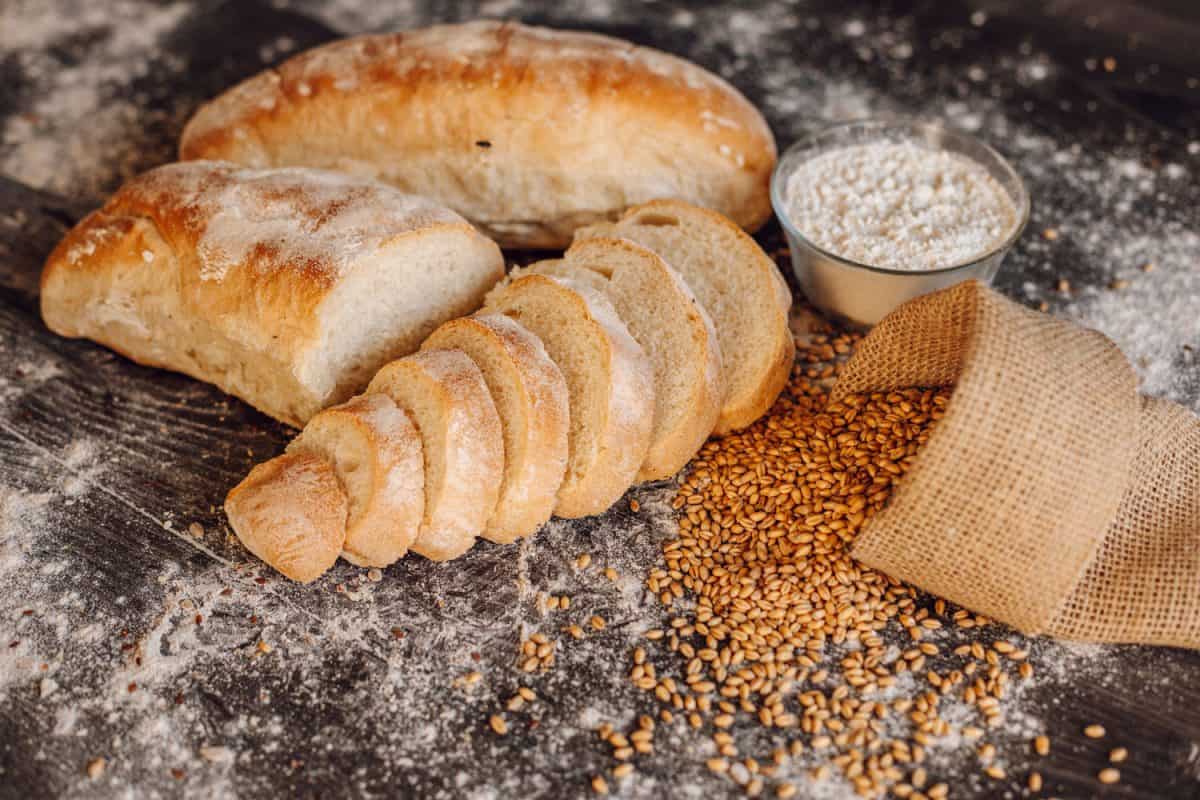
Bread is wonderful. It's hard to imagine a world without it in our lives, and a delicious-looking slice makes any meal that much better. Having the proper tools to safely and cleanly get your fresh bread out into the hands of people excited for it is a wonderful thing. We hope this article helped!

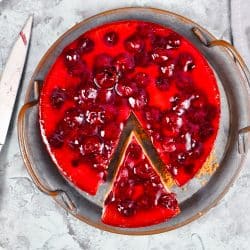
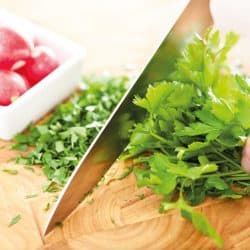
![Sliced fresh bread with dates and bread knife, Do You Need To Wash A Knife After Cutting Bread? [And Other Care Tips For Bread Knife]](https://kitchenseer.com/wp-content/uploads/2021/06/Sliced-fresh-bread-with-dates-and-bread-knife-250x250.jpg)

